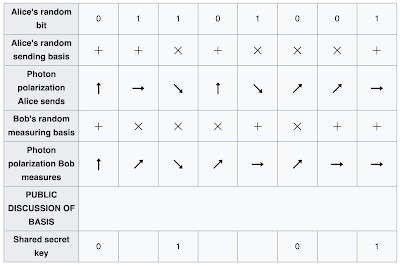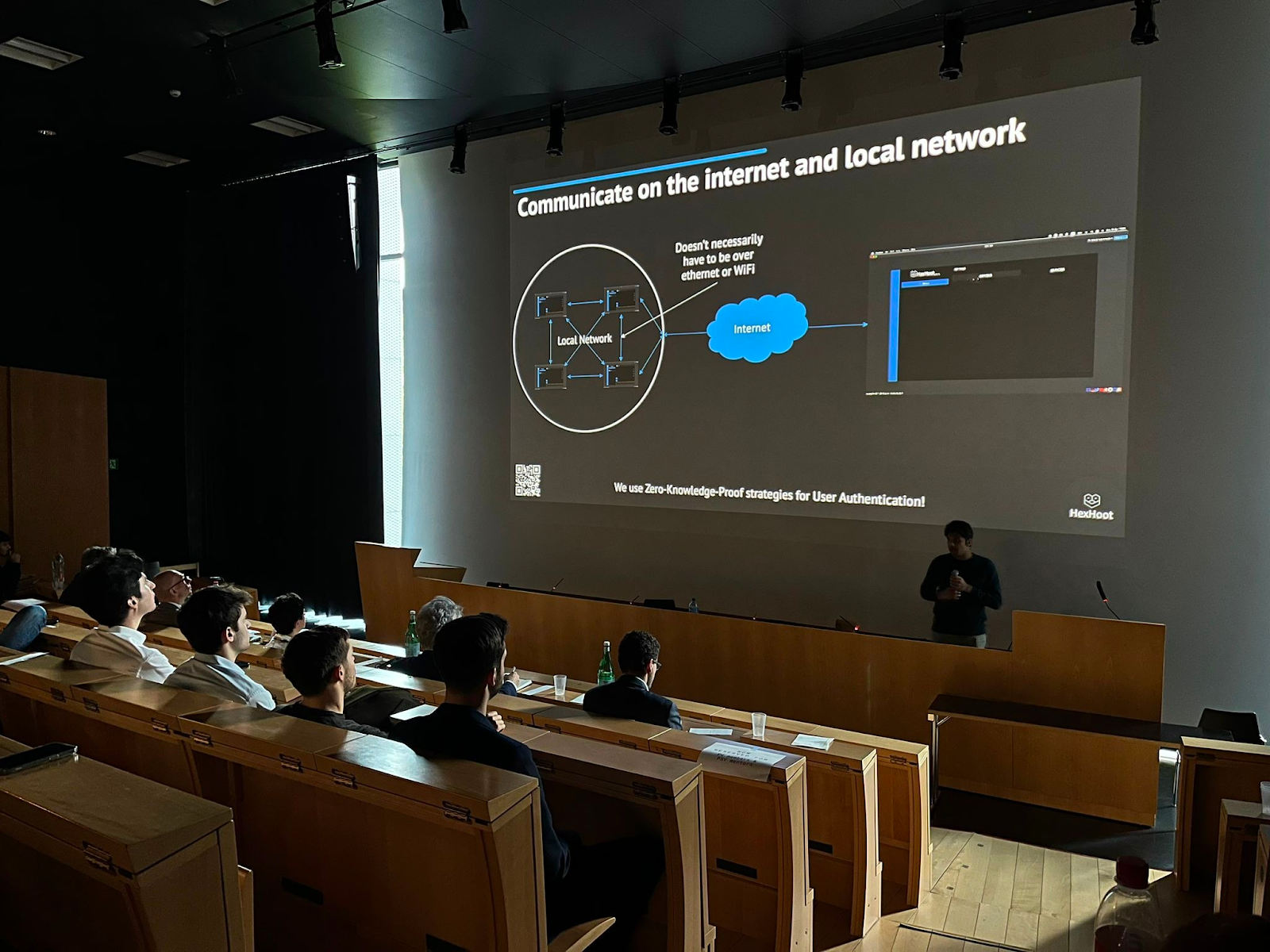How a couple of courses in Physics lead to the creation of HexHoot
'Quantum Computing' and 'Information & Physics' were two courses that I attended in my master's programme, both of which were by Dr Stefan Wolf, a wonderful professor to interact with. In these courses, at different points, we were introduced to the BB84 protocol for Quantum key distribution created by Charles Bennett and Gilles Brassard. Learning this sparked a segue that eventually lead to the formulation and creation of HexHoot.
 |
| A screenshot taken from the Wikipedia article on Quantum key distribution |
To clarify, HexHoot does not use Quantum computing. The idea that two people can share a key, that is only known to them, through a public channel was quite intriguing to me, and I started searching for similar things that could be done using classical machines. However, I did not immediately start searching for it on the web though; rather, I had a conversation with a friend of mine working in the cryptocurrency space, Dario Moceri, while we were hanging out for dinner, wherein I posed this as a discussion topic while removing all the Quantum aspects of it. He confirmed that there are indeed methods that can do similar things. At this point, I proposed the idea of creating a communication system based on this, wherein the channels through which people communicate can be determined by this shared key.
After some googling, I found a protocol named Elliptic-curve Diffie–Hellman (ECDH), which is being used by HexHoot to enable users to communicate with each through a secure channel. It is to be noted that ECDH helps two people get a shared private key, which is used to encrypt the message using Advanced Encryption Standard (AES) cypher, which is used by the U.S. Government to encrypt classified documents.



Comments
Post a Comment